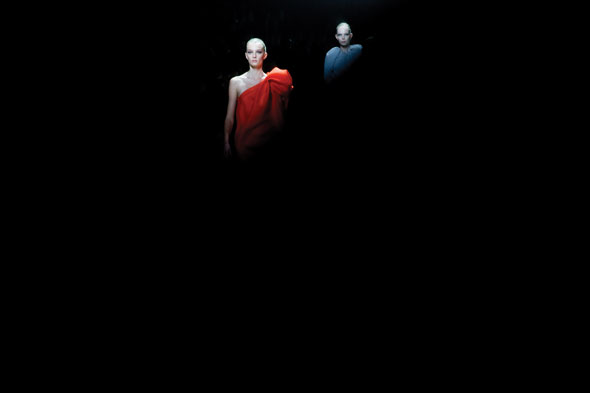Disregarding the conventional elements of fashion photography,
architect-turned-photographer But-Sou Lai has perfected the art of the imperfect
Text by Lynn Wang
Photography by But-Sou Lai

Fashion photography today is obsessed with artificial perfection. Mise-en-scène and composition have become just as important as models and the clothes they wear. The majority of fashion editorials today involve a large cast of designers and stylists to deliberately manipulate every aspect of a photograph, which is then further manipulated in post-production processes such as Photoshop.
Departing from these falsely cinematic obsessions, photographer But-Sou Lai takes a less controlled approach, which results in imagery that is phenomenal and true. Phenomenal because you are transported immediately to the scene of beauty, either at the fashion show or on the street, and true because the moment captured in the photograph is genuine—a moment of expression, a fleeting dart of the eyes, or the ephemeral gestures of a dress. Lai’s photographs have too much respect for you and your intelligence to serve you a vapid or superficial experience.
His photographs are not about the clothes or the model wearing the clothes, but about the pomp and potency of fashion. It’s about watching a fashion show behind rows of people, or witnessing hundreds of stylists and buyers gaze at a model on the catwalk. It’s about catching sight of a beautiful dress on a woman on the other side of the window and turning your head because that first glance was not enough. Lai’s work is essentially a candid study of the romance and power of fashion.
Incidentally, Lai was not trained as a photographer, but instead learned black and white Chinese watercolor painting as a child from his mother in Hong Kong, going on to complete an architecture degree from McGill University in Montreal. The day he decided to venture into photography his family and friends rejoiced the long-awaited, obvious choice for his aesthetic talents. However, his long detour before pursuing photography full-time had equipped him with unique abilities to employ the viewfinder and think three-dimensionally.
The heavy-hitters of fashion design understand that the field is not two-dimensional, and many have sought out Lai to capture their creations. A limited edition, 688-page opus was recently published to celebrate ten years of Alber Elbaz at Lanvin. Elbaz wanted to show the process behind a collection and invited Lai to spend several weeks in the Lanvin atelier to document the work. Phillip Lim has also depended on Lai to photograph the inner-workings of his 3.1 label for several years. The three-dimensional experience of observing fashion—and more importantly, the processes behind its design—lends the desire, joy and distinction of memorable beauty to these photographic works.
Currently living in Shanghai, China, Lai splits his time between China, the United States, Europe, and the necessary flights in-between. His admirable loyalty to his clients (he prefers to call them friends) takes him to remote parts of the world sometimes for just a few hours, but the devotion is a mutual bond where his friends firmly and indisputably endorse Lai’s work. And as a team, their collaborations are more than the sum of methodical procedures and processed treatments of their works, creating a refreshingly imperfect product that exudes the romance and power of fashion.




